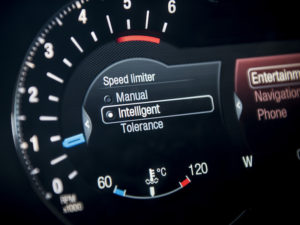European auto industry expresses concerns over new vehicle safety measures
The European Automobile Manufacturers’ Association (ACEA) has responded to yesterday’s (21 February) vote on new vehicle safety equipment, broadly welcoming the move but expressing concerns over lead times.~
The vote saw members of the European Parliament’s Committee on Internal Market and Consumer Protection (IMCO) approve a range of new vehicle safety standards initially proposed by the European Commission in May last year.
The transport policy proposals – known as the Third Mobility Package – would see 11 different systems, including advanced safety features such as autonomous emergency braking (AEB) with pedestrian and cyclist detection and overridable intelligent speed assistance (ISA), alcohol interlock installation facilitation, drowsiness and attention detection and accident data recorders, be required on new cars within the next three years. Currently these features are only available on some models.
It would mark the first significant changes to EU minimum safety standards since 2009 and could save 25,000 lives in the EU between 2022 and 2037 according to an official study.
Commenting on the vote, ACEA Secretary General, Erik Jonnaert said: “We welcome the willingness of MEPs to enter rapidly into inter-institutional negotiations on this legislation, which is key to further improving road safety.
“Indeed, ACEA supports a broad range of the safety measures voted upon by IMCO, including the requirement that all new car types come equipped with autonomous emergency braking (AEB), drowsiness and attention detection systems, reversing detection for cars and vans, emergency stop signals, and lane departure warning systems.”
However, it said that auto manufacturers are concerned about the proposed time between the entry into force of the regulation and the moment it applied, and said this should be aligned with product development time in a pragmatic way, allowing at least 36 months before application.
Jonnaert added: “Despite a three-fold increase in traffic, road safety in Europe has improved significantly in the last 30 years. Maintaining this trend is important for an industry that prides itself on designing, producing and selling safe vehicles in probably one of the most demanding markets in the world.”


